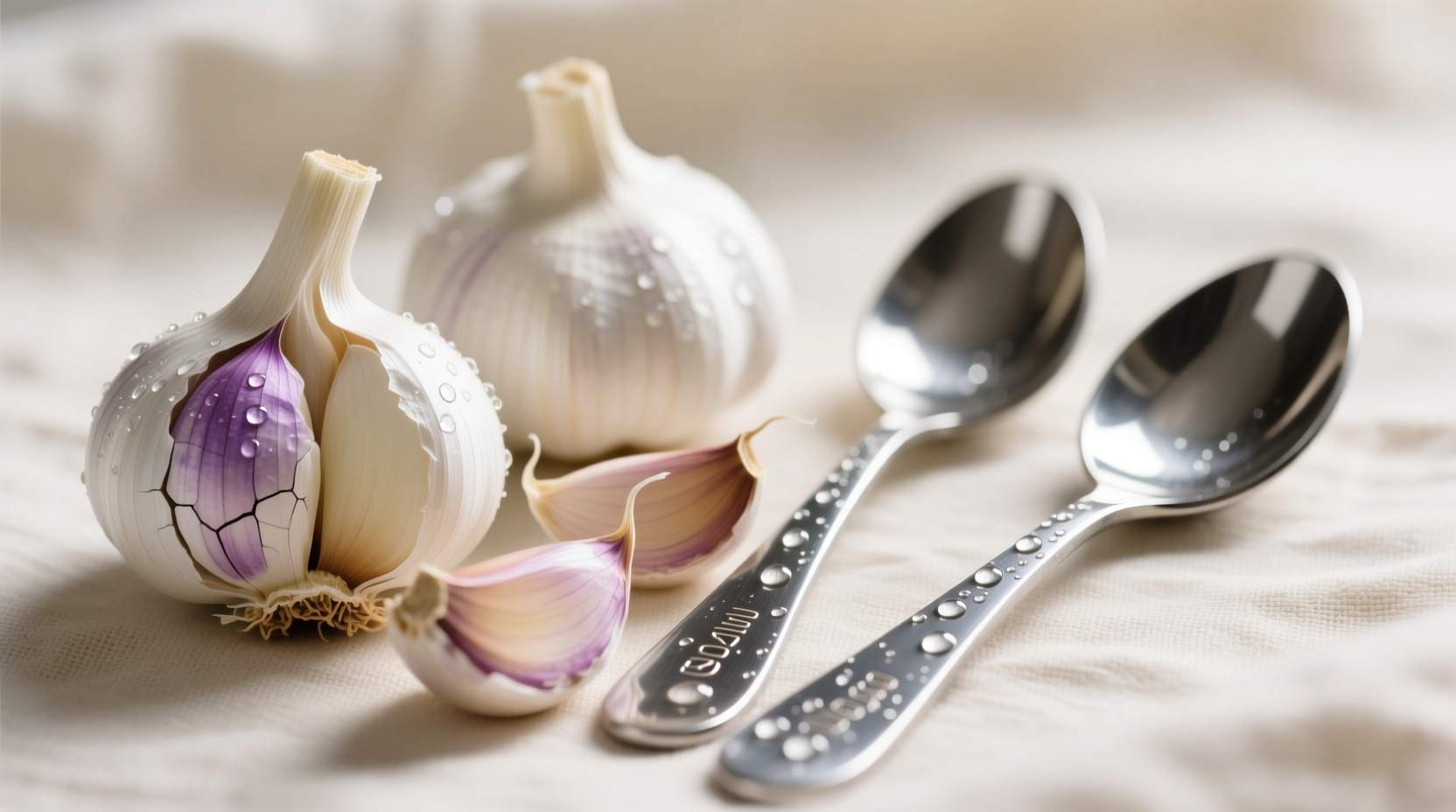Getting garlic measurements right can make or break your dish. Whether you're following a recipe that calls for tablespoons of minced garlic but only have whole cloves, or you're scaling a recipe up or down, understanding this conversion is crucial for consistent results in your cooking.
Why Garlic Measurement Matters in Cooking
Garlic's potent flavor means even small measurement differences can significantly impact your final dish. Too little leaves recipes lacking depth, while too much creates overpowering bitterness. Professional chefs rely on precise measurements to ensure flavor balance, especially in delicate sauces and dressings where garlic plays a starring role.
| Garlic Form | Equivalent Measurement |
|---|---|
| 1 small clove | ½ teaspoon minced |
| 1 medium clove | 1 teaspoon minced |
| 1 large clove | 1½ teaspoons minced |
| 2 medium cloves | 1 tablespoon minced |
| 6 medium cloves | 1 tablespoon garlic powder |
Factors That Affect Garlic Measurements
Not all garlic cloves are created equal. Several variables influence how much minced garlic you'll get from your cloves:
- Garlic variety - Softneck varieties (most common in supermarkets) tend to have smaller cloves than hardneck types
- Clove size - "Medium" cloves typically measure 1-1.5 inches long and ¾ inch in diameter
- Preparation method - Minced versus pressed garlic yields different volumes
- Packing density - How tightly you pack the measuring spoon affects the final amount
According to the USDA National Nutrient Database, one medium garlic clove (about 3 grams) yields approximately 5 milliliters of minced garlic, which equals one teaspoon. This scientific measurement confirms the standard culinary conversion used by professional kitchens worldwide.

Practical Measurement Techniques for Home Cooks
When precision matters in your cooking, try these professional techniques:
- The teaspoon method - Mince your garlic, then gently spoon it into a measuring teaspoon without packing
- Weight conversion - Use a kitchen scale: 1 tablespoon minced garlic weighs approximately 9 grams
- Visual reference - A medium minced clove should fill a standard teaspoon about halfway
- Pre-minced alternative - When using jarred minced garlic, remember it contains preservatives that slightly alter volume
Culinary research from the Institute of Food Technologists shows that minced garlic releases more allicin (the compound responsible for garlic's characteristic flavor) than whole cloves. This means your measurement accuracy directly impacts not just quantity but flavor intensity in your dishes.
Common Recipe Adjustments and Substitutions
Understanding garlic conversions helps when adapting recipes:
- When a recipe calls for 1 tablespoon minced garlic but you only have whole cloves, use 2-3 medium cloves depending on desired intensity
- For garlic powder substitution, use ⅙ tablespoon (½ teaspoon) per medium clove
- When roasting garlic, remember that 1 whole roasted head yields approximately 1½ tablespoons of soft cloves
- Garlic paste from tubes typically requires using 20% less than fresh due to concentration
The American Association of Cereal Chemists International notes that garlic's moisture content (typically 60-65%) affects volume measurements. This explains why measurements can vary slightly between fresh garlic harvested at different times of year.
Troubleshooting Garlic Measurement Issues
Encountering problems with garlic measurements? Consider these solutions:
- Inconsistent flavor - Standardize your mincing technique for uniform particle size
- Recipe too strong - Try using 1 clove instead of 2 for delicate dishes like fish or cream sauces
- Not enough garlic flavor - Let minced garlic rest for 10 minutes before cooking to maximize flavor compounds
- Substitution confusion - When in doubt, start with less garlic—you can always add more during cooking
Remember that garlic intensity varies by season and growing conditions. Spring garlic tends to be milder than fall-harvested bulbs, which affects how much you might need for the same flavor profile. This natural variation is why professional chefs often taste and adjust rather than relying solely on measurements.











 浙公网安备
33010002000092号
浙公网安备
33010002000092号 浙B2-20120091-4
浙B2-20120091-4